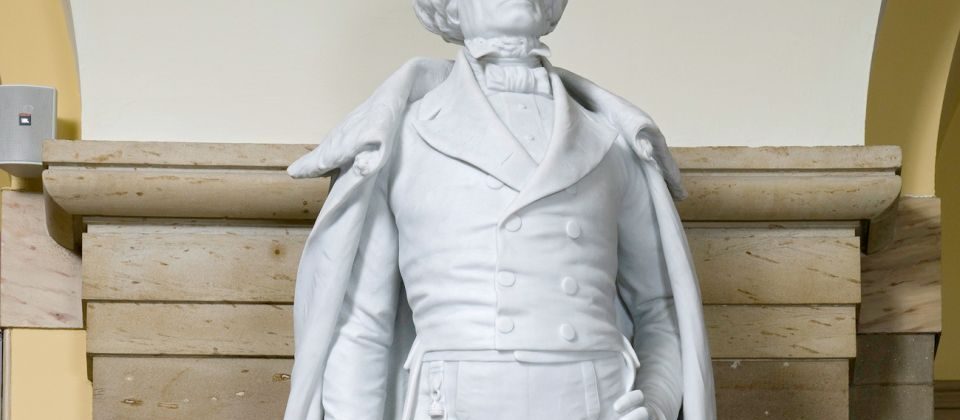

For some historical context on Confederate monuments check out our interview with Karen L. Cox in the latest episode of The Way of Improvement Leads Home Podcast.
The vote was 285 to 120. This means that 120 Republicans wanted to keep Confederate monuments in the U.S. Capitol.
The bust of former Supreme Court chief justice Roger Taney, the author of the 1857 Dred Scott decision, was also part of the bill. The bill proposes replacing Taney’s bust with Thurgood Marshall, the first African American Supreme Court justice. In addition to the bust of Taney, the bill would remove the statues of John Calhoun, Charles Aycock, James Clarke and return them to South Carolina, North Carolina, and Arkansas, respectively.
Here is Savannah Behrmann and Ledyard King at USA Today:
“This sacred space, this temple of democracy has been defiled for too long. We ought not to forget history. We must learn from history. But we ought not to honor that which defiles the principles for which we … stand,” House Majority Leader Steny Hoyer, D-Md., said on the House floor before the vote. “It’s time to remove those symbols of slavery, segregation and sedition from these halls.”
The bill passed by a vote of 285 to 120. Every Democrat present and 67 Republicans voted for it. The bill heads to the Senate for consideration, where itwould need 10 Republican senators to join every Democrat to pass the upper chamber.
“This sacred space, this temple of democracy has been defiled for too long. We ought not to forget history. We must learn from history. But we ought not to honor that which defiles the principles for which we … stand,” House Majority Leader Steny Hoyer, D-Md., said on the House floor before the vote. “It’s time to remove those symbols of slavery, segregation and sedition from these halls.”
The bill passed by a vote of 285 to 120. Every Democrat present and 67 Republicans voted for it. The bill heads to the Senate for consideration, where itwould need 10 Republican senators to join every Democrat to pass the upper chamber.
The legislation would require states to remove and replace any statues honoring members of the Confederacy in the National Statuary Hall Collection in the Capitol by prohibiting “persons who served as an officer or voluntarily with the Confederate States of America or of the military forces or government of a State while the State was in rebellion against the United States” from the collection.
Read the entire piece here.
Why did so many Republicans vote against this bill?
Glenn Grothman of Wisconsin said he opposed the bill because Thurgood Marshall supported the Roe v. Wade decision in 1973.
Barry Loudermilk said he did not like the way the Democrats “skirt[ed] procedure.”
Kevin McCarthy voted for the bill, but pointed out that all of the former Confederates represented by the busts and statues removed were Democrats. This prompted Princeton historian Kevin Kruse to tweet:
Dan Bishop and Ted Budd of North Carolina voted against the bill. But they were quick to endorse a Billy Graham statue:
Tim Burchett of Tennessee voted against the bill. He called the passing of the bill “political gamesmanship” on the part of the Democrats:
Tom Cole of Oklahoma voted against the bill, but said he was glad Congress was “moving in the right direction.”
Scott DesJarlais of Tennessee is not hiding behind “procedure”:
Byron Donalds of Florida voted against the bill and then went on Newsmax to talk about this:
Vicky Hartzler of Missouri said the states should decide which monuments to send to the Capitol.
Jason Smith of Missouri voted against the bill:
Michelle Fischbach voted no. She tweeted this yesterday:
Andy Biggs of Arizona voted no:
Is anyone surprised that Marjorie Taylor Greene voted “no?”
Thomas Massie of Kentucky:
Matt Rosendale of Montana issued a statement:

Most GOP members of Congress like to brag about their votes on Twitter. I was struck by how many of them were silent when it came to explaining this particular vote to their constituencies.